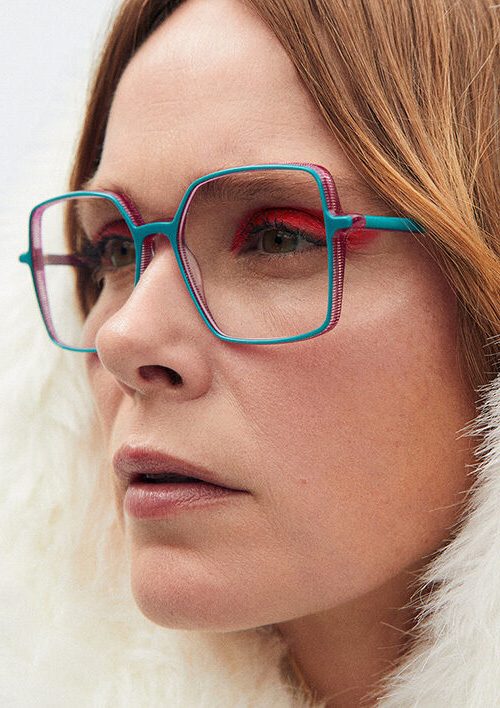The contact lens have come a long way since 1948, when an optical technician named Kevin Touhy introduced the corneal lens. This is the smaller contact lens we see most often today. The first commercially available soft contact lens was introduced in 1971.(source) These were made out of hydrogel, a hydrophilic (water-loving) polymer. Now there are many types of contact lenses.
Statistics show that 8.4% of individuals aged between 15 and 64 years old who wear contact lens in the United Kingdom. That is over 4 million people wearing contact lenses, 5% of these are daily disposable lenses. Speak with our opticians in Heywood so you make the right choices. You could choose your contact lenses in Middleton, one of our Optometrist branches.
Why People wear contact lenses over traditional glasses
- Less chance of injury, regular glasses may break if you take a hard hit in sport. Contact lenses will not break
- Larger field of view, contact lenses give you an unobstructed field of view because unlike glasses they have no frames. You can view more of your surroundings and react much quicker
- Better peripheral vision, even wrap around sports glasses still have limited peripheral vision unlike contact lenses.
- Vision is more stable, glasses no matter how we’ll they are fitted they are still prone to movement. Any sharp body movement will displace the frame temporarily from your face. This vill effect your vision for longer than expected.

Types Of Contact Lenses
Daily disposable lenses
These are used to correct short or long sightedness. They are probably the healthiest and most convenient way to wear contact lenses. A fresh clear lens every day with no need for solutions. An ideal solution for when you don’t want to wear glasses.
Reusable Lenses
Monthly or two-weekly contact lenses are used to correct short or long sightedness. You still wear them daily but they are not disposed of at the end of the day. You clean them in a special solution and keep them stored until you need them again. This is ideal if you are looking for the most economical lenses.
Multiifocal/Varifocal
Multifocal contact lenses are ideal for people with presbyopia. This is an age-related condition that affects almost everyone as you mature in years. As the lens of your eye becomes less flexible, it becomes harder for you to adjust your focus from far too near objects. The optical technology used in multifocal lenses allows you to see both near and far.
Toric Lenses For Astigmatism
Toric contact lenses correct for astigmatism issues that arise from a different curvature of the cornea or lens in your eye. This is usually referred to as regular astigmatism, corneal astigmatism or lenticular astigmatism. Toric contact lenses are specially designed to fit the shape of astigmatic eyes. They are available as daily or reusable contact lenses.
Extended-Wear Lenses
You can wear them overnight. Take them out at least once a week for cleaning. Hard contacts are more durable than soft ones. They’re easier to take care of but can be less comfortable. They often give better vision for conditions like astigmatism
What Are Thee types Of Contact Lenses Made From
When choosing a suitable type of lenses you have to consider the points below for your individual user demands.
- Comfort
- Wear time
- Handing
- Cost
- Vision
Soft lenses
Soft contact lenses are made from gel-like, water-containing plastics called hydrogels or silicone hydrogels. These lenses are very thin and pliable and conform to the front surface of the eye.
Silicone hydrogel lenses
This newer generation types of contact lenses allows more oxygen to reach the eye than standard hydrogel lenses. Unlike hydrogel lenses, the oxygen permeability of SiHy lenses depends on the amount of silicone used, not the water content
Silicone has a gel-like consistency that is flexible and often used in other medical devices, such as medical implants7.
Gas permeable lenses
Also called GP or RGP lenses, gas permeable contact lenses are rigid contact lenses that maintain their shape on the eye, enabling them to correct astigmatism and other refractive errors.
Gas permeable contact lenses are typically smaller in diameter than soft lenses and are made of highly oxygen-permeable materials.
It usually takes some time for your eyes to adjust to GP lenses when you first start wearing them, but after this initial adaptation period, most people find GP lenses are as comfortable as soft lenses.
Hybrid contact lenses
Hybrid contact lenses have a rigid gas permeable central zone, surrounded by a “skirt” of hydrogel or silicone hydrogel material. They are designed to provide wearing comfort that rivals soft or silicone hydrogel lenses, combined with the crystal-clear optics of GP lenses.
MMA lenses
MMA contact lenses are rigid contact lenses that look like GP lenses but are made of a plastic material that is not oxygen permeable. PMMA lenses were commonly prescribed years ago, but have essentially been replaced by gas permeable lenses.
You can also add colour to some of the contact lenses above which we will cover in another article. For eye care advice speak with our opticians in Middleton for the types of contact lenses that would suit you.
Relate; Different types of lenses.





